
If you’re in the market for a digital piano or portable keyboard, you may have noticed that these aren’t the only types of keyboard-based electronic instruments out there.
Many players (especially the beginners) quickly get overwhelmed by all the terms and specs being thrown at them while they’re trying to figure out what is the right instrument for them.
After reading this article, you’ll have a deep understanding of their unique features and similarities, which will help you decide what instrument type is best for you.
The Rise of Electric Musical Instruments
The world of electronic music instruments is an interesting one that warrants a quick history lesson.
In 1752, Benjamin Franklin was the first to understand electricity, paving the way for modern consumer electronics.
Thanks to the efforts of Thomas Edison, the light bulb was popularized in 1879, after which electronics gradually became a mainstream commodity.
As innovation progressed, more and more items harnessed the power of electricity. The first electronic vacuum cleaner appeared in 1908, and the first air conditioner in 1911.
Even music benefited from the rise of electronics, and I’m not just talking about the recording revolution and the rise of music playback either.
Theremin was one of the earliest mainstream successes, an electronic instrument that was musical and playable, as opposed to the noisemakers that predated 1920.
The electric guitar was invented in 1931, featuring electromagnetic pickups to capture string vibrations as electrical signals.
The same concept was then used in the early electric pianos such as the Fender Rhodes and Wurlitzers.
There’s also the rise of analog synthesis in the 1940s, where people took the oscillators, filters, and envelope controllers from the telecommunications industry and paired them with amplifiers to generate rich, otherworldly sounds.
This was more than the basis of classic synthesizers. It also led to classic electric organs such as the popular Hammond sounds used nearly everywhere.
As you can tell, we’ve been coming up with ways to make music out of anything and everything since the beginning, and electronics serve as another medium for generating harmonically pleasing sounds.
Electronics are intertwined with musical developments, so I recommend looking into it if our survey has piqued your interest. I’ve barely scratched the surface, but there is lots of fun history to discover.
Next Stage: Digital Musical Instruments
What we’ve covered so far refers to analog electronics, but let’s consider a somewhat different realm of digital electronics.
Digital electronics is the basis for computing and differs from analog electronics in that it uses discrete, quantized pulses rather than continuous fluctuating signals.
Instead of a continuous electric waveforms that vary, digital signals occur as simple 1s and 0s.
Why is this important? A quantized signal makes things predictable and much easier to control. This technology undergirded digital synthesis in the 70s to 80s and eventually enabled digital sampling.
What is Sampling?
You’ve probably seen the term samples in articles about digital pianos and keyboards.
Samples is the industry term for short recordings (or relatively short). A sampled drum-kit would consist of single hits recorded in isolation, capturing a digital snapshot of the instrument being played.
Similarly, a sampled 88-key piano would include recordings of each key, maybe even multiple recordings for each key, played with various degrees of pressure, with the sustain pedal depressed, so on and so forth.
These techniques are known as multi-sampling and are a recent advancement enabled by larger storage spaces.
When it comes to capturing the essence of an instrument, the more samples the better.
How does an instrument know which sample to trigger? It relies on MIDI.
Quick Introduction to MIDI
Again, you’ve probably seen the term MIDI before. Many think it’s a simple, standard bonus feature on most keyboards and digital pianos. In actuality, MIDI is so much more than that.
Introduced in 1981 as a collaboration between Roland, Yamaha, Korg, Kawai, and numerous US and European synthesizer companies, MIDI (Musical Instrument Digital Interface) became the standard protocol for most electronic instruments.
Originally, this technology was created as a means for two instruments to interact. For example, I could connect my Korg KROSS as a MIDI controller to the Roland INTEGRA sound module.
This flexibility meant that MIDI could do so much more, too.
Take keypresses for instance. MIDI can handle the pitch and velocity of notes. This allows manufacturers to assign different samples to different conditions, making digital emulations of actual pianos much more possible.
It doesn’t end there, either. MIDI also detects Continuous Controllers (CCs) and Program Changes (PCs).
While these features are commonly used for parameter changes on synthesizers, they appear in digital pianos.
Whenever you swap between sounds or depress the sustain pedal, you send a CC or PC signal to the instrument’s internal motherboard, which responds accordingly.
MIDI is an integral part to how most electronic instruments work, so hopefully this has given you a solid introduction to the protocol.
So, Keyboards are Just MIDI and Sampling Combined, Right?
For most companies, that’s correct. Keypresses trigger MIDI that links to corresponding samples. Companies like Yamaha, Kawai and Korg use sampled pianos a lot and are really good at making them sound and play great.
Diving deeper, there are sound engines specific to brands and product lines, but these enhance the experience by offering effects and processing techniques that help sounds react realistically.
Alternately, some companies take a modeling approach by, recreating sounds without using samples.
The most notable example of modeling is probably Roland’s SuperNATURAL engine (and their V-Piano engine).
These are impressive feats of engineering, but for the purposes of this article, we won’t differentiate between modeled and sampled sounds.
Having covered the basics of digital music instruments, let’s turn to the main focus of this article.
Why Are There So Many Types Of Digital Pianos?
Though you might be confused by the industry’s naming scheme, it’s actually a blessing in disguise when you understood the basics.
In this article, we’ll cover these following types of digital pianos and keyboards:
- Digital Pianos
- Portable Digital Pianos
- Console Digital Pianos
- Digital Grand Pianos
- Hybrid Digital Pianos
- Arranger Digital Pianos
- Stage Pianos
- Keyboards
- Portable Arranger Keyboards
- Workstations
- Synthesizers
- Performance Workstations/Synthesizers
- MIDI Controllers
We’ll highlight the difference between a digital, keyboard, and stage piano and their subtypes.
In each category, we’ll give a quick introduction to its type, cover the defining characteristics of each group, identify the intended audience, and provide a few notable models from the category.
Digital Pianos vs Keyboards
For the ease of classification, we’ve grouped everything into two classes, digital pianos and keyboards.
This is not a firm rule, but it’s a convenient method of differentiating the many types we’ll discuss.
By definition, any electronic keyboard instrument can be called a digital keyboard, including digital pianos, stage pianos, synthesizers, and practically everything we’ve listed above.
However, not every keyboard can be called a digital piano.
Thus, digital pianos should have a full 88-key keybed that features a fully-weighted hammer-action keyboard that simulates the feel of an acoustic piano.
You might also stumble upon more compact 73-key or 76-key digital pianos such as the Yamaha P-121 or Korg LP-380 but these are quite rare.
On the other hand, a keyboard diverts the focus away from being a piano.
Note that there’s always the chance of overlapping feature sets, so don’t be surprised when you find a keyboard with a piano-style, 88-key weighted keyboard!
A less strict rule is that digital pianos are more basic than keyboards, often coming with 10-20 built-in tones, as opposed to the hundreds available on even cheap keyboards.
The focus is on acoustic pianos, electric pianos, and organs, and digital pianos favor quality over quantity.
Of course, a digital piano can sometimes feature traits of arranger keyboards as well.
For example, the Casio PX-S3100 includes rhythms, 1000+ tones, and some sound editing functionality. However, it lists as a digital piano due to its 88 fully-weighted keys and quality piano samples.
Digital Pianos and Electric Pianos
We could argue semantics here and say that a digital piano, by definition, uses electricity and electronics and should therefore be called an electric piano. In fact, some distributors do this, further adding to the confusion.
We generally refer to the electromagnetic pianos as electric pianos.
The keys connect to a hammer, which strikes a metallic reed or wire-like tine. The vibrations are too soft to be audible and are picked up by electromagnetic pickups and amplified.
It’s also worth noting that electric pianos do not rely on digital software. Notable examples include the many models of the Fender Rhodes and Wurlitzers.
Digital Piano Types
Now that we’ve covered necessary background info, let’s jump into our discussion on digital pianos.
As a quick refresher, digital pianos should have a fully weighted 88-key keybed and quality piano samples. Its core feature set should also focus on delivering an authentic piano experience.
As such, consider everything else a bonus.
Portable Digital Pianos
Portable digital pianos are sometimes called slab pianos due to their shape. Their board-like shape is simple, but it packs a ton of power.
Portable digital pianos are some of the bestselling models out there, mainly due to their high value-to-price ratio.
For the price, you get fully weighted keys, quality piano samples, and onboard speakers.
Despite a compact enclosure, portable digital pianos don’t sacrifice playability.
The only gripe one may have with portable digital pianos concerns speaker quality. With such little space to work with, even high wattage speakers fail to deliver full-sounding bass.
Thankfully, headphone outs can remedy this, and to be fair, the speakers don’t necessarily sound bad either.
Unique Features
As a baseline, a portable digital piano’s biggest strength is its portability form factor.
These digital pianos are quite lightweight, which is impressive considering they have complex hammer action mechanisms and speakers.
Portability comes into play when space is a concern. If you’re living in a small apartment and don’t have space for a full-size digital piano, it’s nice to be able to move portable digital pianos around without much hassle.
Even if space isn’t a huge concern, portable digital pianos often have matching stands available as an additional purchase, giving them a faux furniture-style look that fits both home and stage.
Another feature we briefly touched on is price. Portable digital pianos are affordable and include all you need for basic piano practice.
Who are They For?
In general, we recommend portable digital pianos to beginners and to intermediate players with a bit of experience.
For just under $500, you get a digital piano with all the necessary features for a good starting point for aspiring piano players.
Even for more experienced pianists, a portable digital piano may be a good choice.
Higher-end portable digital pianos include more sounds and higher quality key actions that deliver a more realistic experience without sacrificing portability.
Gigging musicians on a budget also love these instruments for their portability and affordability compared to more expensive (and usually much more advanced) stage pianos.
If you’re considering a portable digital piano, chances are, it’s the correct choice.
Notable Models
We’ve actually got an article dedicated to the best digital pianos where we’ve covered our favorites from multiple price points and justified their inclusion in the list.
We’ve also got Top 5 lists giving options and detailed analysis if you already know your budget.
Since we’ve talked about sub-$500 digital pianos above, our favorite was the Roland FP-10 thanks to its excellent key action and realistic sounds.
For higher end models, we recommend the Kawai ES920, which includes an even more realistic key action and a more detailed sample set.
For a more general recommendation, the Roland FP-line of keyboards came really close to winning nearly every category, scoring a solid 2nd place in our hearts every time.
Roland is a name you’ll be seeing quite a lot in the following sections, and I have no qualms in recommending them.
Console Digital Pianos
The other major digital piano variant is the console digital piano, sometimes called a furniture-style digital piano.
As you may have guessed from the name, these are the opposite of the previously discussed portable type, having huge enclosures that emulate the look of a real piano.
It’s worth noting that console digital pianos come in a few varieties.
Modern-style versions (Yamaha’s YDP-S series, Casio’s Privia series, Roland’s DP- and F-series) are sleek and take up as little space as possible (they’re like portable digital pianos with a matching stand).
Traditional-style digital pianos (Roland’s RP- and HP-series, Yamaha’s YDP-series, Casio’s Celviano line, Kawai’s KDP- and CN-series) resemble acoustic pianos and often feature a short ‘work desk’ area.
Upright-style digital pianos (Kawai’s CA- and CS-series, Roland’s LX-series, Yamaha’s CLP-series), as the name implies, resemble acoustic uprights, tall cabinets and all.
These are the most premium in the category and feature top-of-the-line key actions, sound engines, and speaker systems.
Unique Features
The biggest plus of console-style digital pianos is a larger chassis. Having a lot more space to work with means companies can include hardware that improves your overall experience.
The biggest plus here over portable digital pianos is the speaker system. A larger chassis allows bass frequencies to resonate outward, delivering a richer tone than portable digital pianos.
Also, a noteworthy inclusion here is the triple pedal setup. Most portable pianos require a separate purchase for sostenuto and soft pedals, but console digital pianos include these in their chassis.
Finally, most console digital pianos have a cover, which helps fend off dust, making this a small but welcome addition to the package.
Who are They For?
Console digital pianos overlap a lot with portable alternatives and target a similar audience.
For beginners, console digital pianos have the advantage of feeling more ‘proper.’ Sitting down in front of a larger, more solid instrument is quite an experience!
If you’re looking to buy your first digital piano, don’t write off console style digital pianos.
The higher price may be a concern, but the portability sacrifice is not massive and may be a plus in the long run.
For advanced piano players, console digital pianos are often the best choice.
Upright-style digital pianos usually feature sophisticated wooden key actions and immersive multi-speaker sound systems that are physically impossible to implement in a portable digital piano.
Notable Models
Console digital pianos are widespread and most companies have dipped their toes into this market.
We’ve made a few top 5 lists covering our favorite sub-$1000 and sub-$1500 console digital pianos, and there’s a lot of good options out there.
Our top budget pick was the Casio PX-870, the flagship model of the long-running Privia line.
This is a modern-style model, and it comes with great keys and sounds, making it an easy recommendation for players of all levels.
The Kawai KDP120 is another model we liked and can be considered the ‘dark horse’ of its sub-$1500 price range.
It’s not the most well-known digital piano, but features aside, the best thing about it is the excellent sound quality.
Digital Grand Pianos
If premium, upright-style digital pianos aren’t posh enough for you, digital grand pianos are some of the most beautiful looking digital piano models out there, but they’re also very expensive.
If you haven’t already guessed, these digital pianos are designed to look and feel like a concert grand, lid and all.
Make no mistake, these models are downright insane in terms of price, and they’ll be out of reach for the general public (and downright unnecessary).
The best aspect of these digital pianos is their uncompromising design.
You’re already paying a pretty penny for the body construction, so companies justify the asking price even further with a hefty amount of engineering.
Unique Features
Looks aside, the most significant feature of digital grand pianos are their well-engineered speaker systems. We’ve briefly discussed how a larger chassis helps with sound recreation, and the same rules apply here.
With digital grand pianos, it’s not just about recreating the harmonics you’d expect from a real piano. The biggest hurdle is recreating the sounds in a way that allows them to react to the lid.
Piano manufacturers have done their research, and if you’ve ever had the chance to try out a digital grand piano, you’ll agree that they do sound superb.
Who are they for?
If you’re considering a digital grand piano, chances are you’re an experienced musician.
However, certain concert halls and instrument providers might prefer a digital grand over an acoustic one due to its lower maintenance requirements.
Notable Models
Roland’s GP-series and Yamaha’s CLP-GP/CVP-GP series are premium examples in this category.
Hybrid Digital Pianos
Hybrid digital pianos feature a unique design.
All our previously discussed varieties rely on sample playback and modeling to recreate the sounds of a real piano, while real acoustic pianos rely on mechanical hammers hitting strings.
Hybrid digital pianos combine these factors in a multitude of ways.
The most common application is how they include the hammer mechanisms ripped straight from acoustic pianos, but paired with digital samples to deliver a realistic experience.
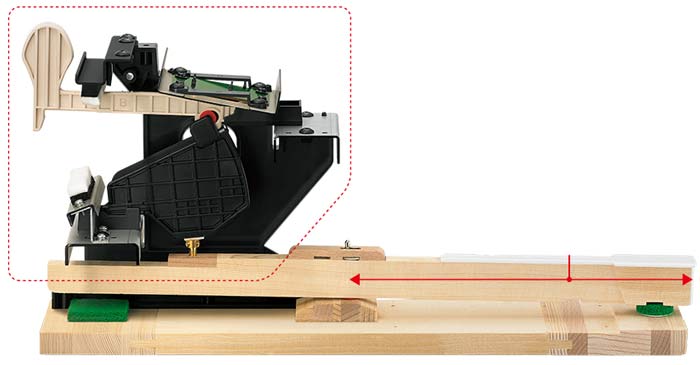
Hybrid Hammer Mechanism
Some digital pianos also include the strings, allowing you to mute the strings and only hear the digitally recreated sound for silent practice (though these pianos are more commonly referred to as Hybrid Acoustic Pianos).
This is a challenging topic, so we’ll cover it in more detail in an upcoming Digital vs Acoustic Piano article.
Notable Models
Kawai’s Novus NV, Yamaha’s AvantGrand series and Casio’s GP Hybrid series use the ‘no strings’ approach, and their product descriptions are interesting reads if you enjoy learning how things work.
Arranger Digital Pianos
Formally, this is not a type of digital piano, but I have chosen to treat it as one.
To put it simply, an arranger digital piano is a digital piano (portable OR console) with features commonly found in arranger keyboards.
What makes them different is that in addition to all those extra features, they still have detailed piano samples and 88 hammer action keys.
Unlike classic digital pianos, these instruments come with a whole world of built-in sounds, rhythms, songs, effects, and recording features.
As a result, their control panels are often cluttered with buttons and dials, and also with displays to improve the user experience.
Who are they for?
Arranger digital pianos are for people who want more than a realistic piano experience.
If you like to experiment and explore musical styles and genres, or if you want to compose your own music or become a one-man band using auto-accompaniment features, then these instruments could be a perfect choice.
Notable Models
Casio and Yamaha dominate this segment of the market.
Popular models include the Yamaha DGX-670, Casio PX-S3100, Casio PX-780, and the Yamaha CSP-series.
In many cases, there is a stripped-down version of an “arranger” model that provides a very similar piano experience but lacks many of the extra features (e.g. Yamaha DGX-670 – P-125; Casio PX-S3100 – PX-S1100; Casio PX-780 – PX-770; Yamaha CSP-series – CLP-series).
Stage Pianos
Stage pianos break one of our rules of digital pianos since they generally lack a speaker system.
However, they are digital pianos at their core and seek to provide a versatile, portable piano experience that caters to gigging musicians who are constantly on the move.
Gigging musicians will need dedicated amp/cab combos or a front-of-house setup via DI boxes anyway, so the lack of a speaker system is understandable and ultimately a positive.
You might argue that many stage pianos are nothing more than performance synthesizers or workstations in disguise, but they do tick a few boxes that justify their inclusion in this category.
- They have high-quality piano samples, and in many cases the library is expandable.
- They have top-of-the-line hammer actions, making piano sounds the main focus, as opposed to synth sounds or other bonuses.
Unique Features
Having some performance synthesizer and workstation DNA embedded into stage piano design is terrific. These instrument categories excel in sound malleability, and hands-on control is always a plus for stage keyboardists.
Stage pianos don’t necessarily include a full suite of options, but they do give pianists a good amount of control.
You often get modifiable effects and a method to manage presets, along with a wider sound range.
Connectivity is also quite important. More and more keyboards are including 5-pin legacy MIDI connectors to help integrate sound modules and extra instruments for easy control.
Balanced XLR jacks are also becoming more mainstream, completely bypassing the need for DI boxes.
Who are they for?
As the name implies, stage pianos are meant for gigging musicians on stage.
Many session musicians I know prefer performance workstations instead, though, so this is ultimately a matter of personal preference.
Workstations are more flexible in terms of their sonic palette, but they much more difficult to use, requiring deep menu diving and prior knowledge of synthesis basics and sound design to utilize fully.
On the other hand, stage pianos are simpler and give you a more limited set of options that you’ll actually use. This is ideal for musicians who have a piano background and just want to play with minimal hassle.
Notable Models
One of our favorite stage pianos is the classic Nord Piano 4, which is a most coveted model with a hefty price.
Even so, it’s well worth the money and is updated with new sounds on a consistent basis.
The Nord Stage 3 is expensive and you may even consider it a performance keyboard (especially the non-88 key models, which don’t have fully weighted keys). However, it has some of the best sounds and the best interface out there.
We’ve also reviewed the Roland RD-2000, and this may actually be my favorite stage piano that pretends to be a workstation.
It comes with 2,000+ tones and a good degree of customization and connectivity options, making it perfect for people who prefer to design their own presets.
Keyboard Types
Now that we’ve gone through the digital piano category, it’s time to enter the realm of ‘keyboards.’
The term itself should be considered a blanket term rather than a descriptor.
While we previously defined keyboards as instruments lacking weighted keys and a full 88-key keyboard, it’s more accurate to describe them as any piano-like instrument in which piano sounds aren’t the primary focus.
Why the distinction? Well, things can get a little confusing. Korg’s Nautilus line has models with synth-style keys, but they also have 88-key models with fully weighted keys (the same with Yamaha’s Montage line, Roland’s Fantom series, etc.).
These models also come with detailed piano samples (alongside a large library of other sounds, too). So, are they digital pianos?
Knowing this, we’ve chosen to classify keyboards according to their focus.
Portable Arranger Keyboards
Portable arranger keyboards are a popular choice for beginning musicians, thanks in large part to an extremely affordable price. These keyboards are easy to manufacture, and leading companies reuse a specific chipset for subsequent models.
If we’re talking about realism, these keyboards are passable at best. The keys always feel cheap (excusable for the price range) and are not suitable for mastering proper finger technique.
However, they have arranger features, hence the name, so let’s talk about those.
Unique Features
Arranger functionality allows one keyboardist to perform full songs with backing tracks from a single keyboard. These keyboards feature lots of tones and rhythms and are very versatile in the right hands.
Players can also trigger bassline variations with simple button presses and key combinations, thereby controlling the backing track as they play out top lines.
However, it’s worth noting that these sounds are far from realistic. High-quality samples are not a focus here and dynamics are limited due to the lack of multi-samples.
Who are They For?
Beginners are an obvious target audience, though we’d recommend considering an upgrade down the line if you’re serious about mastering the piano.
But if you’re looking to master performance keyboards, these models are viable. They’re even supported by Trinity Guildhall’s Keyboard course.
Notable Models
Yamaha’s PSR-E series and Casio’s Casiotone line are the big names in this category, and they’re probably the best value you can get for such a low price.
Since portable keyboards are often confused with digital pianos, please refer to our comparison table below to learn about the key differences between them.
Arranger Keyboards
Few are familiar with higher end arranger keyboards, which are a bit less common.
However, they do exist and serve a subset of people wanting the quality of higher-end sounds with the ease of standard arranger keyboards.
These models are in a little competition with the workstations we’ll cover shortly. In most cases, workstations are more flexible and powerful, yet they demand a higher degree of knowhow to operate.
Unique Features
Like cheaper counterparts, arranger keyboards allow “one-man-band” style performances. The higher price tag also comes with a better selection of sounds and rhythms, especially regarding sound quality.
The extra cost is justified by extra features. Most high-end models come with touchscreens and detailed editing functions, allowing you to polish a performance even further.
Unlike synthesizers and workstations, arranger keyboards often have built-in speakers.
Who are They For?
Arranger keyboards are designed for the composers and buskers.
Producers and stage performers will gravitate towards workstations and stage pianos instead, but that doesn’t mean arranger keyboards are bad.
They cater to a different audience that wants a simple yet rich sound, but with less hassle.
Notable Models
Yamaha’s PSR series includes high-end models, like the PSR-SX700 or PSR-SX900 (known as arranger workstations by Yamaha) and Korg’s Pa-series (Professional Arranger), which is acclaimed for its large feature set.
Workstations
A few decades ago, workstations were a premiere way to create songs from scratch. Unfortunately, the advent of computer-based Digital Audio Workstations (DAWs) and the flexibility these offer has pushed this category out of the limelight.
Regardless, many people still prefer the focused workflow of classic workstation keyboards, so companies have continued to release revisions through the years.
Companies like Roland have slowly transitioned their workstation lines into a more performance-oriented mindset. We’ll cover those examples in a dedicated section.
Unique Features
The keyword for workstations is control. Whether it’s deep nested menus or a touchscreen interface, workstations have always delivered in-depth editing.
Sequencing is another workstation feature. It allows players to record and edit parts to layer on top of each other. Thanks to MIDI flexibility, you don’t just get to ‘sequence’ parts, you also get to move notes around and quantize them.
Effects are plentiful here. Instead of preset non-modifiable effect chains, you get individual modules that you can mix and match to taste.
Who are They For?
Producers are the target audience here, but gigging musicians also love their in-depth editing options.
Unfortunately, workstations are bulky, which makes them less portable, but it’s a small trade-off for the power they offer.
Notable Models
Pure workstations are less common these days, but Korg’s Nautilus, Yamaha’s Montage series, and Roland’s Fantom line continue to provide the powerhouse features that set workstation apart.
More affordable models like the Yamaha MODX series and Korg Krome line are also available with a more compact form factor.
Synthesizers
Synthesizers have a complicated history that’s too confusing to explain here.
If you’re not familiar with synths, just know that they follow a simple concept. You begin with harmonically rich sound source and subtract frequencies to achieve a more controlled sound.
There are many approaches to synthesis, such as basic subtractive, frequency modulation, phase modulation, and more.
Since 2010, companies have been releasing a new wave of impressive synthesizer keyboards.
Unique Features
A synthesis engine, whether analog or digital, is the core characteristic of synthesizers. In most cases, this means an oscillator section, a filter, envelope shapers, and possibly an effects chain.
The focus is on sound design and detailed editing is usually available (sometimes at the expense of usability).
Most classic synthesizer have 49 or even fewer keys, which is usually more than enough for designing sounds and patterns.
Some may group performance synthesizers, like the Korg Kross and Roland JUNO-DS, into the same category since they utilize sample-based synthesis, but we’ll save these for the following section because their design ethos is fundamentally different.
We could go on about synthesis methods and their applications, but we’ll save that for another day. Just know that synthesizers focus squarely on sound design opportunities.
Who are They For?
Synthesizers cater to sound designers and producers. A lot of trailer stings and drones are generated with the help of synthesizers, and many songs enjoy a bit of added “spice” thanks to synthesized sounds.
Notable Models
Korg’s Prologue and Roland’s JD-XA are analog polyphonic synthesizers which have sold well the past few years. They cater to people who enjoy the purity of analog synthesis.
Dave Smith Instruments is also well known, led by a head of the classic Sequential Electronics Synthesizer Company.
The Nord Lead A1 and many offerings from Elektron use a more futuristic digital synthesis approach and deliver otherworldly tones with ease.
Performance Keyboards
Performance keyboards are quite different from the previously mentioned categories. They deliver a more hands-on approach while streamlining the interface.
Some companies dub these synthesizers (we’ve briefly touched on these terms earlier), and that’s mainly due to their use of sample-based synthesis.
While these are more basic, they also make getting an ideal sound far easier by making things more accessible.
Unique Features
My favorite feature of performance keyboards is the hands-on, easy-use approach. Plentiful controls on these instruments allows players to design sound quickly with minimal hassle.
Unlike fully-fledged workstations, this means less menu diving and more direct control via knobs and buttons, enabling performers to make changes on stage.
Flexibility is also key. Most performance keyboards offer up a ton of variety in terms of sound engines and performance options.
You can easily make splits, switch between sampled and synthesized sounds, modulate between effect chains, and so much more.
Who are They For?
Unlike dedicated synths and workstations, these models are geared to the stage performer and target a similar demographic to the stage piano we covered before.
If you’re solely a piano player, you’ll probably get more bang for your buck with a stage piano.
Notable Models
Korg’s Kross and Roland’s Fantom-0 series are popular performance workstations among session musicians, striking a good balance between usability and flexibility that’s hard to beat.
They compress the company’s strong workstation engine into an easily controllable form and have been a hit ever since they first hit the shelves.
On the affordable end of the spectrum, the Yamaha MX-series is an excellent choice for people wanting to get into performance synths (and to a smaller extent, workstations).
It leans more to the performance side of things, completely removing the sequencing and mixing features that are standard on workstations, focusing more on the looping and performance experience instead.
MIDI Keyboards
Finally, MIDI controllers warrant inclusion in this guide as well.
So, why are these an option? Sounds like a straight downgrade from everything else we’ve covered.
Even cheap portable arrangers offer USB MIDI functionality and can be used as MIDI controllers, so why should we bother with these?
Well, MIDI keyboards are more affordable, since not much extra hardware is needed for sound generation.
This can be a massive plus for performers on a budget, especially if you already own the sound sources or plugins you’ll be using.
Unique Features
Since manufacturers don’t know what software or modules you’ll use, they cram a bunch of control options into the mix.
Even the most basic MIDI controllers feature buttons and knobs that can be assigned to any function you see fit.
Most affordable MIDI controllers are USB only, but premium models may feature legacy 5-pin MIDI connectors, allowing them to control practically everything.
Who are They For?
MIDI controllers are geared towards studio-based producers or stage performers. Many gigging musicians carry around a small MIDI keyboard for flexibility, even non-pianists!
Back when I was a guitarist with a local band, I used an affordable MIDI controller to control software synths running on my laptop, and also to send MIDI CC and PC signals via onboard knobs and buttons to switch between guitar effects. This shows how flexible MIDI keyboards can be.
Notable Models
There are way too many MIDI controllers to list, but M-Audio has been a consistent recommendation through the years, which is a good sign of quality.
You may also recognize this name as the manufacturer of the M-Audio SP-2 sustain pedal we’ve recommended frequently.
Apart from that, AKAI is another prominent name in the MIDI controller business since the early 80s. They’re known for making durable MIDI keyboards that can take a lot of abuse.
Final Words
As you can probably tell, there are all kinds of key-based instruments, so hopefully this article has cleared up any confusion you may have regarding the many models and varieties available.
When it comes to choosing the right instrument for you, I always recommend testing out as many models as possible before making your purchase.
It’s easy to list out the features of each model, but when it comes down to it, how it feels to you – the player – is the most important thing.
Of course, detail will always be lost in summarization, so if you’re looking for more in-depth reviews, check out the articles published on our website.
Since these each focus on a single instrument, they go into much more detail and will tell you if a particular instrument is worth its price.
You might also like:
The Worst | Best Digital Piano & Keyboard Brands Guide
The Ultimate Guide to Buying a Digital Piano
Benefits of Playing Piano (+25 Reasons to Start Learning It NOW)
Picking the Best Way to Learn Piano Today (The Definitive Guide)



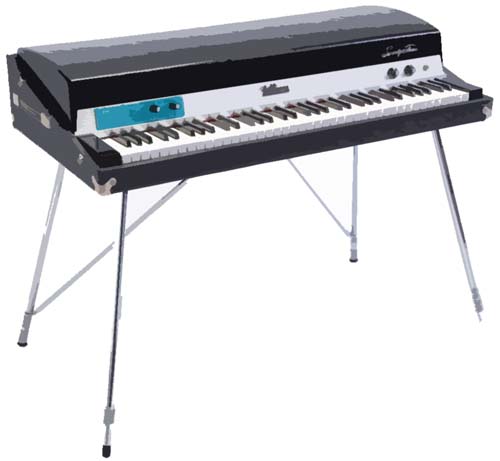
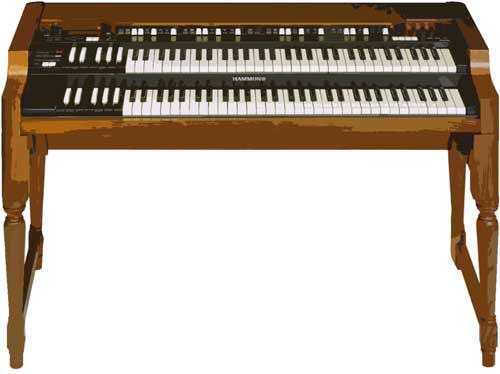
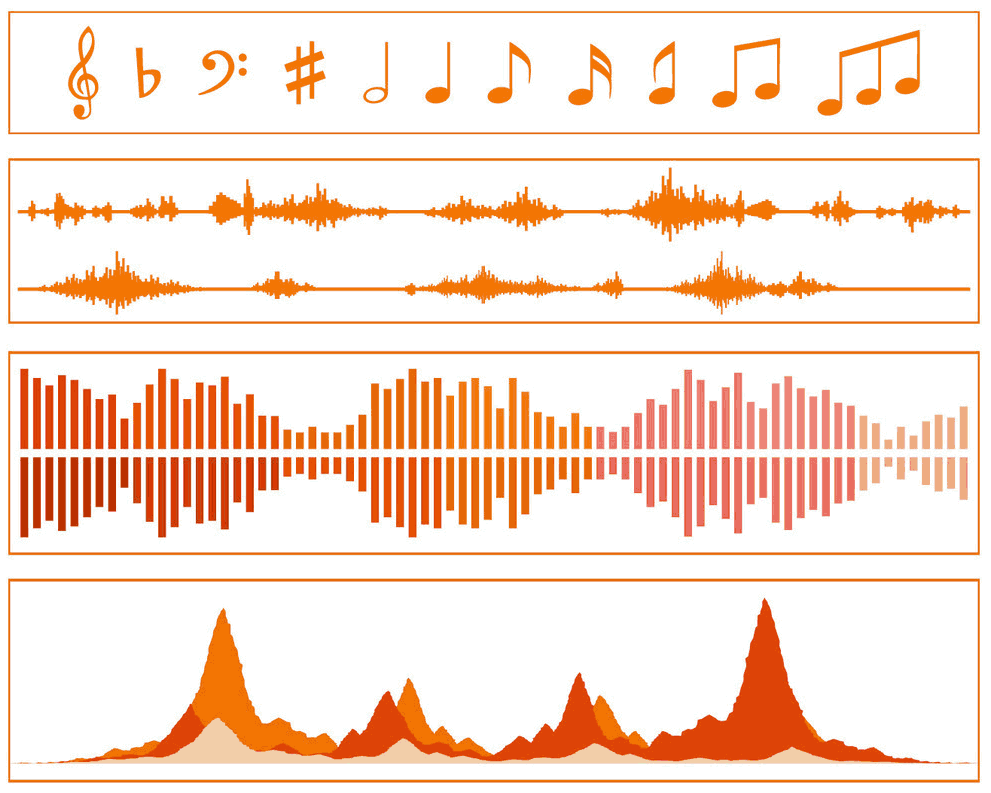



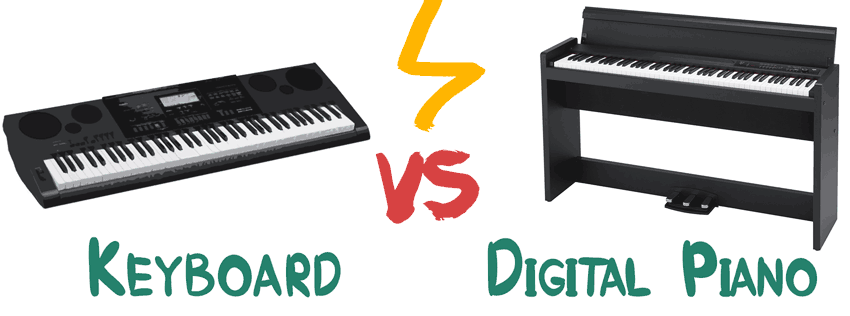
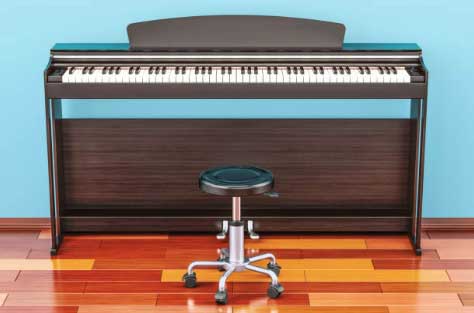

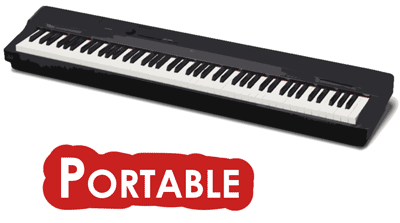


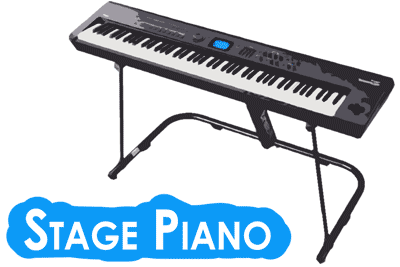

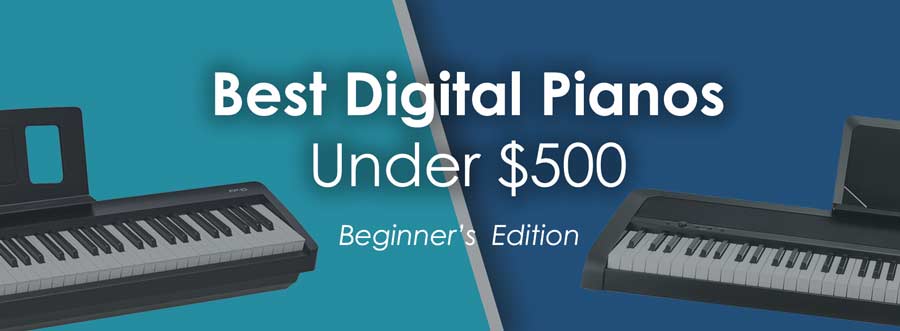



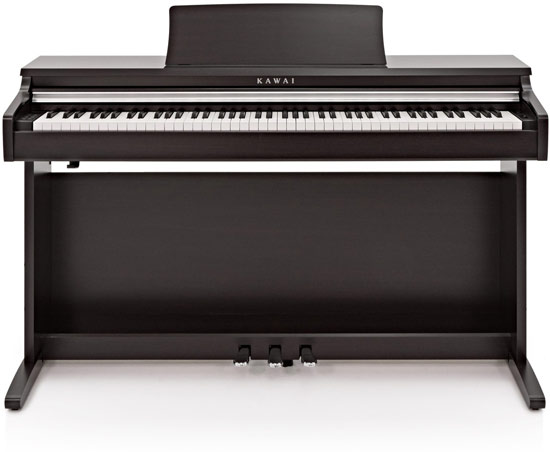





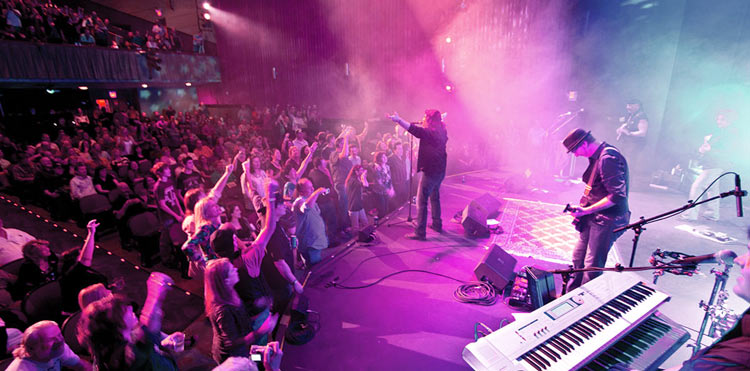



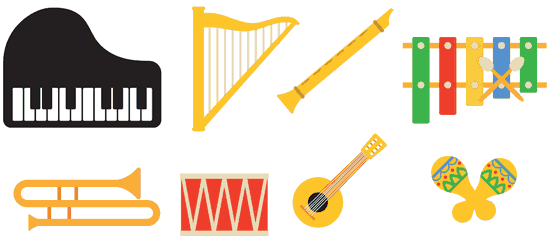
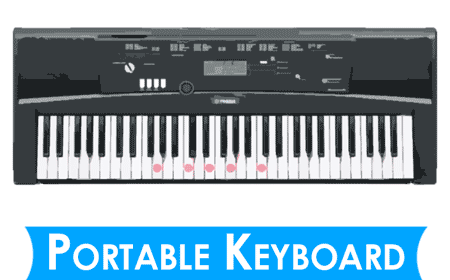











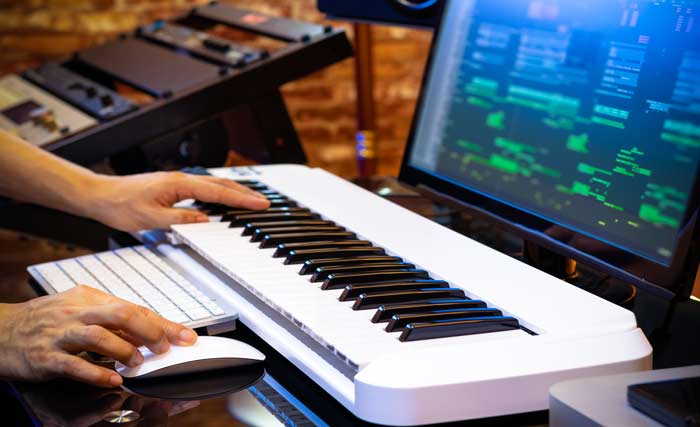

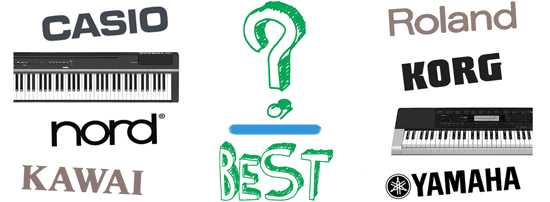
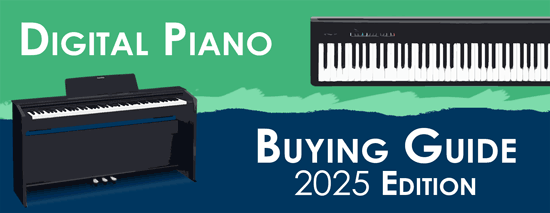



Dear Sirs,
Wonderful article. I did enjoy the comparisons you made among different models. I am writing to you because you could also help me out in a situation I have. I am in need of getting a copy of an old digital piano module: the Oberheim MiniGrand. I have just moved and discovered that the user manual is missing. I was guessing if you could know someone who could have a copy or point to me where to go. There are some sites online that promise to download for free but all of them ask for the credit card numbers and after a brief research I discovered that most of them are scams. If you could locate someone and give him or her my email address I would be willing to pay for the copy that could be pdf or sent by trackable mail. I do hope you may help me on this matter that is very serious for me. I thank you in advance for your kind and fast answer. My email is [email protected] Tel 787-690=0172 within the jurisdiction of USA.
I wish I could help you, but the Oberheim MiniGrand was released over 20 years ago, so I don’t believe there’s a PDF version of the manual. The only thing that comes to mind is to find an owner of the same sound module and ask him/her to scan it, copy it, or send it to you if they don’t need it, eBay and Craigslist might be good places to start.
Hi Lucas,
Thanks for this well-written article. I had a quick question: we have a digital keyboard (Casio 860 with 66 keys) at home, and my 6-year old has started playing with it in the past few months. He can now play some chord progressions quite well, and a few simple melodies too. At what point would you suggest upgrading to a better instrument (an 88-key basic digital piano, I presume)?
Thanks again!
Correction: Casio 860: 61 keys!
Hi Andy,
If the plan is to learn the piano properly and it’s not just a temporary interest, I don’t see any reason why you shouldn’t upgrade right away. The sooner your little one starts playing/practicing on a fully-weighted action the earlier he/she will start learning the proper technique, dynamics, and nuances of piano performance.
Thanks a lot, Lucas!
Thanks a lot Bro. Easy explanation. God bless you…
A very encapsulating article, the setting and usage of pianos are certainly highly important factors in the decision on what to choose. I recall a piano teacher I hired to help me brush up on my skills and assist me in unlearning some bad habits, she was a bit miffed that I didn’t have an upright or grand, instead only offering up an 88 key variant of a Korg Triton Extreme. Nonetheless, after a few months, I converted her into a synth head and she went and bought a Triton of her own.
Today there are some fantastic options, even using an iPad a powerful app with a good quality Midi controller is a low-cost means of accessing authentic-sounding reproductions. From my own experience as a parent, I have found the option of children having access to different sounds and textures other than piano to be more engaging, cultivating their enthusiasm to support traditional piano learning.
Hi Lucas,
Thanks for the amazing article. Perhaps you can help me decide what I’m getting I’m pretty new to this. I was originally going for a console digital piano. I want the full piano experience, and it’s a nice plus to have it take its spot in the living room and be available at moment’s notice. But I also would very much like to know that I can use that same instrument to play the same synthesizer sounds played on the Roland in this clip: https://youtu.be/bAdqazixuRY (at minute 2:47)
Would any midi interface of any digital piano suffice? Or are there special requirement?
I can rely on an external computer if needed if the digital piano doesn’t have the sound, but preferably to change the instrument sound only, if that is at all possible.
This was such a helpful article, thank you!